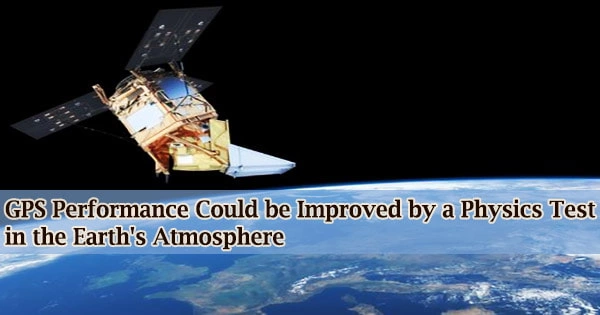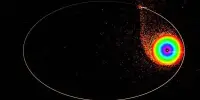In a study cooperation with the University of Strathclyde that could help to improve the function of GPS, the Earth’s atmosphere has been utilized as a “laboratory” to carry out a physics experiment.
The study demonstrates a novel technique for regulating wave modes and remotely monitoring the plasma in the ionosphere, which may aid GPS in performing more accurate computations during severe space weather.
By introducing radio waves into the ionosphere at slightly changing frequencies, the researchers carried out a carefully controlled radar wave experiment.
Next, a recording and analysis of the returning signal was made. The scientists discovered that non-linear waves were combined with excited plasma waves in the ionosphere, creating a wide spectrum of non-linear frequencies in the returned signal.
Radio waves used for communication and radio navigation systems like GPS are reflected and modified by plasma in the ionosphere, but the accuracy of these systems can be impacted by “space weather” events like solar storms.
The research was published in the journal Nature Communications and the experiment was conducted at the EISCAT facility close to Troms, Norway.
The Ionosphere is part of Earth’s upper atmosphere, between 80 and about 1000 km, where extreme ultraviolet and x-ray solar radiation ionizes atoms and molecules, creating a layer of plasma. Other phenomena, such as energetic charged particles and cosmic rays, also have an ionizing effect and can contribute to the ionospheric plasma density.
Dr. Bengt Eliasson
Dr. Bengt Eliasson, a Reader in Strathclyde’s Department of Physics, was a partner in the research and said:
“The Ionosphere is part of Earth’s upper atmosphere, between 80 and about 1000 km, where extreme ultraviolet and x-ray solar radiation ionizes atoms and molecules, creating a layer of plasma.”
“Other phenomena, such as energetic charged particles and cosmic rays, also have an ionizing effect and can contribute to the ionospheric plasma density.”
Early radio wave observations made more than a century ago led to the realization that the results could only be explained by a reflecting layer made of electrons and ions. The goal of early study was to use variables like local time, latitude, and season to explain the different ionosphere layers and their variability.
As a result of disruptions brought on by the sun, sometimes known as space weather events, the focus of ionospheric study has turned in recent years to comprehending the dynamics and plasma physics of ionospheric phenomena.
Due to GPS systems’ inability to accurately represent this dynamic augmentation, inaccuracies in location computations result from these space weather events, which dynamically increase the total amount of ionospheric electrons.
The active regulation of the wave modes created in the ionosphere, as described in our study, has the potential to offer fresh and enhanced diagnostics of temperature, density, magnetic field, and ion composition, with the potential to enhance GPS position estimates during disruptive periods.
Researchers from the University of St. Andrews, the Rutherford Appleton Laboratory, the EISCAT Association in Norway, and the University of Lisbon, Portugal were also involved in the study.
EISCAT is an international association supported by research organizations in China (CRIRP), Finland (SA), Japan (NIPR and ISEE), Norway (NFR), Sweden (VR), and the United Kingdom (UKRI).
















